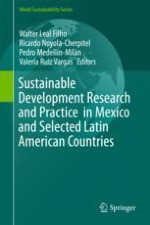2018 | OriginalPaper | Buchkapitel
Sustainable Development for Farmers Transforming Agroindustrial Wastes into Profitable Green Products
verfasst von : Noé Aguilar-Rivera, Teresita de Jesús Debernardi-Vázquez
Erschienen in: Sustainable Development Research and Practice in Mexico and Selected Latin American Countries
Aktivieren Sie unsere intelligente Suche, um passende Fachinhalte oder Patente zu finden.
Wählen Sie Textabschnitte aus um mit Künstlicher Intelligenz passenden Patente zu finden. powered by
Markieren Sie Textabschnitte, um KI-gestützt weitere passende Inhalte zu finden. powered by
